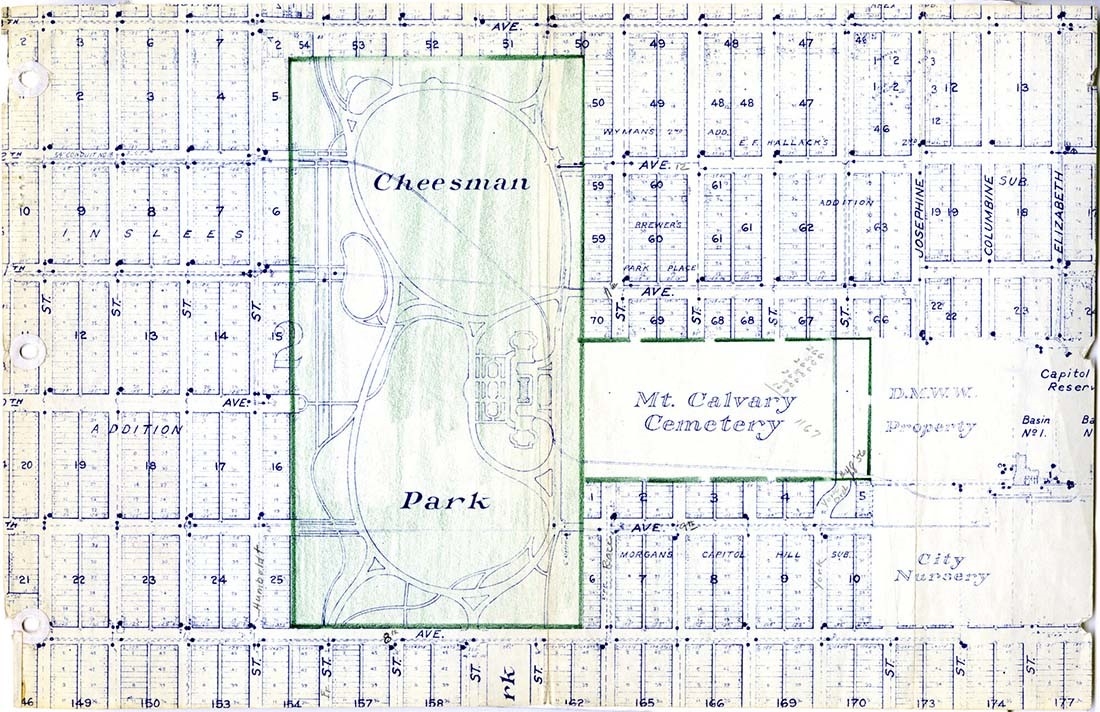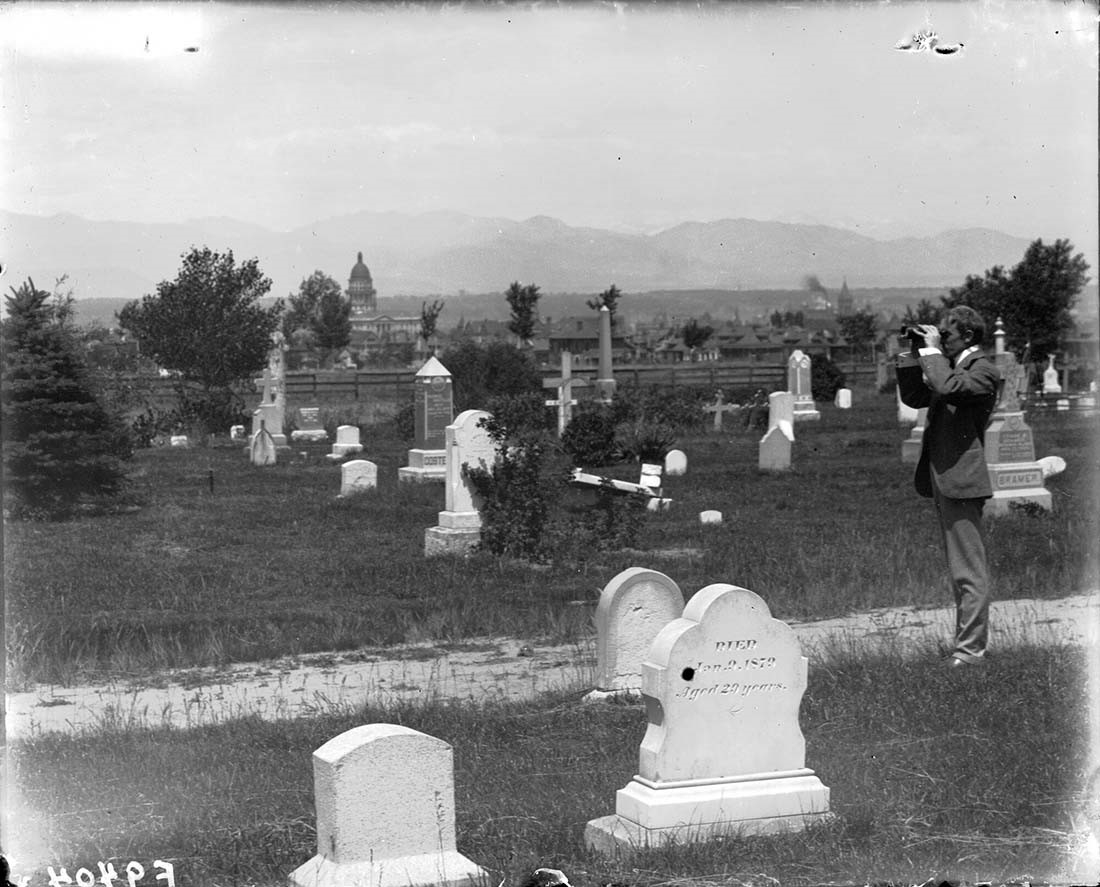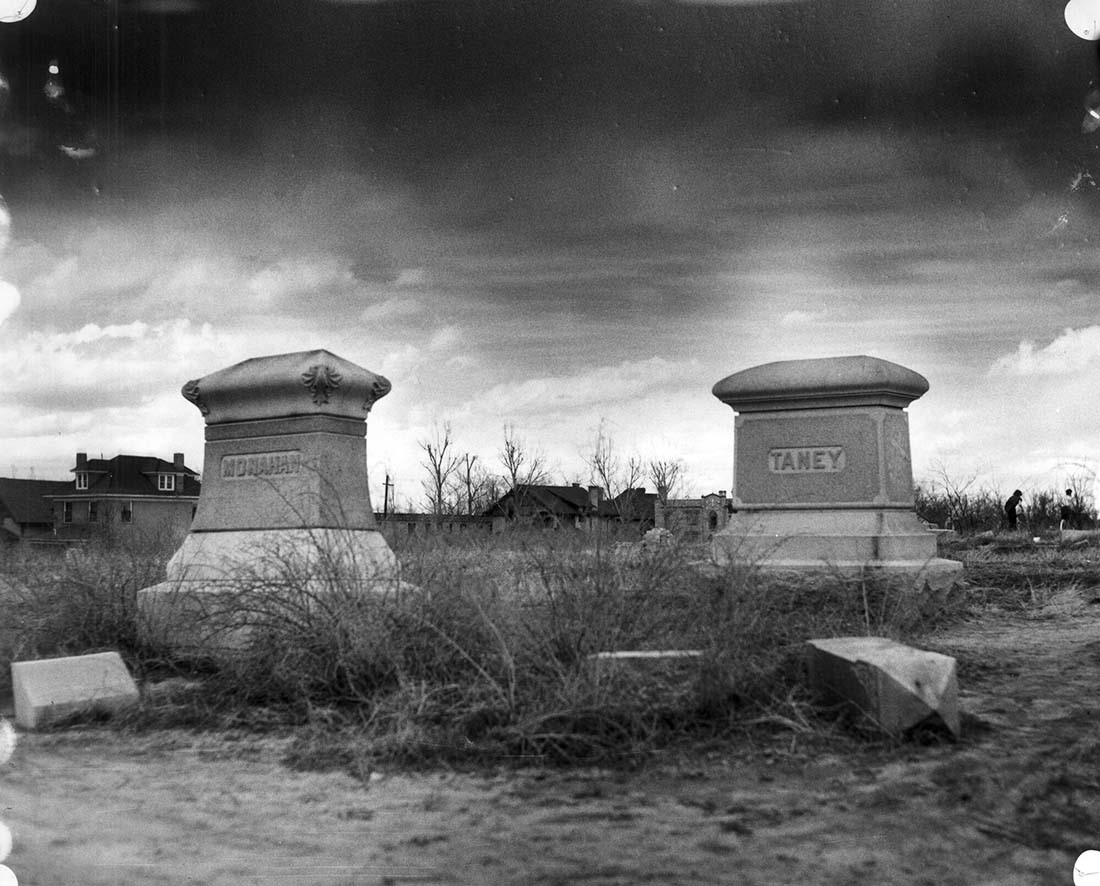Denver Botanic Gardens' Haunted History
Local legends abound surrounding the history of Cheesman Park as an unkept and crumbling cemetery that was later transformed into the recreational area it is today. Before its green fields were dotted with volleyball nets and slacklines, this park was City Cemetery, Denver’s first large cemetery, established in 1859. Originally intended to be a scenic Victorian cemetery like those seen in Boston, New York and parts of Europe, this vision was never realized. Pressure to use the area in a way that would better appease its burgeoning affluent neighbors in Capitol Hill ultimately led to its transformation into a park.
Easier said than done. Thousands of occupants already resided underground in City Cemetery. Undertaker E. P. McGovern was contracted to relocate remains to Riverside Cemetery several miles away in early 1893. Paid by the coffin, McGovern soon saw a way to exploit the wording of his contract and unearthed remains were split between multiple child-sized coffins which were then hauled across town. The city discovered what was going on, halted McGovern’s work entirely and required that all remains either be relocated at their survivors’ expense within 90 days or remain onsite.
Imperfect maps identifying locations of remains, fear of diseases that could be spread by unearthing remains, and the inability of individuals to pay relocation costs for loved ones prevented work from being completed in time for the park’s opening.
It is estimated that 2,000 to 3,000 human remains still reside under Cheesman Park.
Adjacent to City Cemetery was Mount Calvary Cemetery—where Denver Botanic Gardens now exists. Owned by the Catholic Archdiocese of Denver, this cemetery was better maintained than neighboring City Cemetery but fell into disuse after Mount Olivet Cemetery was established in Wheat Ridge and became the only consecrated Catholic cemetery in the area. The abandoned Mount Calvary was used primarily as a playground for adventurous children until it was finally deeded to the City of Denver in 1950.
The relocation of remains from Mount Calvary to Mount Olivet was more organized and expedient than the transition from City Cemetery to Cheesman Park had been, but not without issues. Occasionally remains would be missing from where they were marked on the cemetery’s records, while others would be found during construction and maintenance where no burial had been recorded.
Denver Botanic Gardens was first partially and then completely relocated from its original home in City Park to the former site of Mount Calvary in the late 1950s and early 1960s, with the Boettcher Memorial Tropical Conservatory being formally dedicated in January of 1966.
Although considered by some to be less haunted than our larger neighbor, the Gardens still has its share of ghost stories and reported hauntings.
To learn more about the hauntings and history of Denver Botanic Gardens and Cheesman Park, browse these books at Helen Fowler Library:
- The Ghosts of Denver: Capitol Hill by Phil Goodstein
Written by local historian and walking tour guide Phil Goodstein, this volume covers much of the history of Capitol Hill and Cheesman Park neighborhoods, including the haunted history of the park and its surroundings. - Cemetery to Conservatory by Louisa Ward Arps
A publication of Denver Botanic Gardens, this work covers the transition from the cemetery to its current use in detail, spanning the period from 1859 to 1980. - The Dead Below by Richard Estep
Follow Colorado author Richard Estep and his ghost hunting crew as they explore Waring House at Denver Botanic Gardens in search of evidence of the supernatural.
This post was contributed by On Call Librarian Sean Grimes.
Gallery



Add new comment